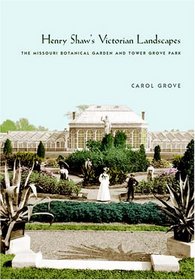Search -
Henry Shaw's Victorian Landscapes: The Missouri Botanical Garden And Tower Grove Park
Henry Shaw's Victorian Landscapes The Missouri Botanical Garden And Tower Grove Park
Author:
At the age of eighteen, Henry Shaw (1800?1889) left his home, the industrial town of Sheffield, England, to import manufactured goods from St. Louis via the Mississippi and Missouri Rivers. Two decades of financial success in St. Louis allowed him to relinquish his business operations and take up more genteel pursuits. In 1840 he began nearly te... more »
Author:
At the age of eighteen, Henry Shaw (1800?1889) left his home, the industrial town of Sheffield, England, to import manufactured goods from St. Louis via the Mississippi and Missouri Rivers. Two decades of financial success in St. Louis allowed him to relinquish his business operations and take up more genteel pursuits. In 1840 he began nearly te... more »
ISBN-13: 9781558495081
ISBN-10: 1558495088
Publication Date: 10/30/2005
Pages: 232
Rating: ?
ISBN-10: 1558495088
Publication Date: 10/30/2005
Pages: 232
Rating: ?
0 stars, based on 0 rating
Publisher: University of Massachusetts Press
Book Type: Hardcover
Members Wishing: 1
Reviews: Amazon | Write a Review
Book Type: Hardcover
Members Wishing: 1
Reviews: Amazon | Write a Review
Genres:
- Crafts, Hobbies & Home >> Gardening & Landscape Design >> Landscape
- Crafts, Hobbies & Home >> Gardening & Landscape Design >> By Region >> Midwest
- Engineering & Transportation >> Architecture >> General
- Engineering & Transportation >> Architecture >> Landscape
- Reference >> Architecture




